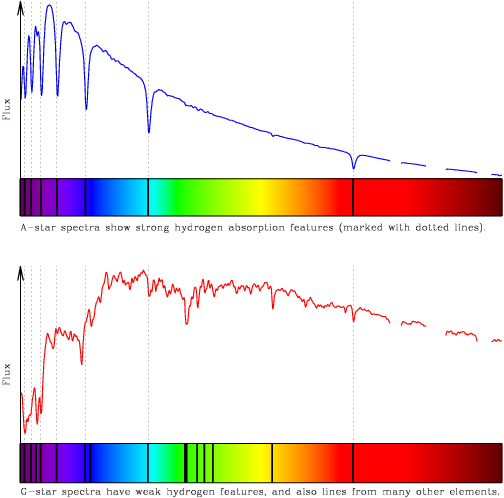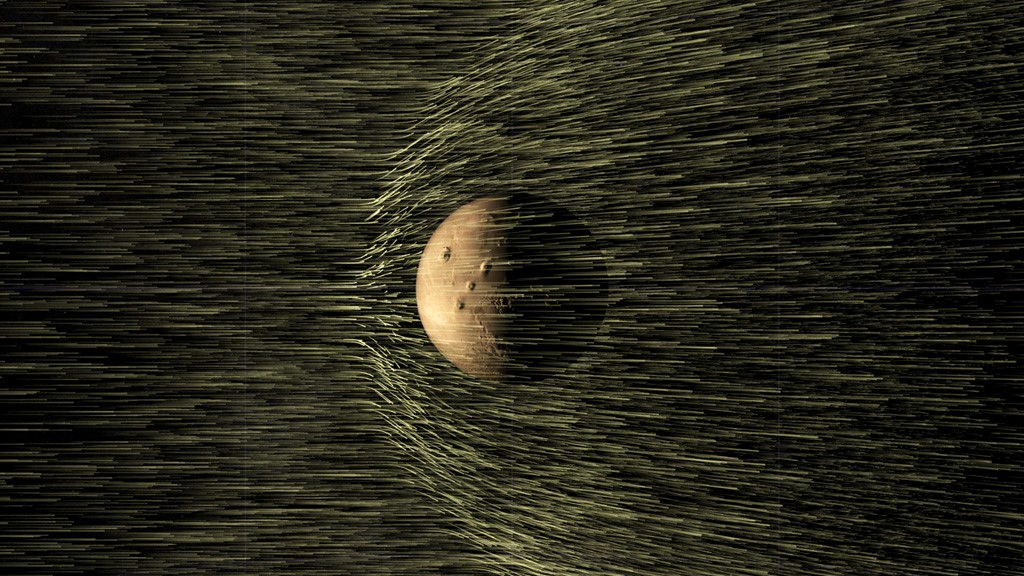
Earth’s atmosphere is crucial to the existence of life on this planet. The atmosphere both holds all of the oxygen we breathe and protects us from harmful high energy radiation from space. Without it, life on Earth might have never arisen. With this in mind, it is reasonable to wonder if planets beyond our own also have life sustaining atmospheres. Looking around the other terrestrial planets in our solar system, the answer is both yes and no. Mercury does not have an atmosphere, Mars has a very thin atmosphere, and Venus has a thicker atmosphere compared to Earth.
But what about planets beyond our solar system, exoplanets? Do any of them have exospheres? An exosphere is just the term for an atmosphere of an exoplanet. Our intuition says that some portion of exoplanets will have protective exospheres of some thickness. But how would we even go about seeing an exosphere? Afterall, the Earth’s atmosphere is only 60 miles thick. Compared to the radius of the Earth, the atmosphere is miniscule. If the Earth were an apple, then its atmosphere would be thinner than the fruit’s skin.
The trick is not to look for the exosphere itself, but rather measure the atomic makeup of the exosphere. By now, Astronomers have a fairly good guess as to what elements make up different types of planets and different types of stars. So, when looking at the spectrum of a star-planet system, if they can find an element that seems out of place, chances are that element resides in an exosphere.
First, what is a spectrum? A spectrum is, for our purposes, a rainbow. In general, stars emit white light – a combination of all colors smushed together. But if you pass this light through a glass prism, different wavelengths of light, which corresponds to different colors, bend through the glass prism at different amounts. This has the effect of “splitting” the light from white into all the colors of the rainbow, running from red to violet in the classic Roy G. Biv pattern (Red, Orange, Yellow, Green, Blue, Indigo, Violet).
If you looked at this rainbow very carefully, you would notice that it’s not a perfect continuous rainbow. There are some black lines interspersed at seemingly random positions inside the rainbow, see the figure below. These lines are, in fact, not random at all. They are perfectly predicted by physicists: they are Absorption Lines – very specific wavelengths of light, which certain atoms absorb. From careful laboratory experiments, physicists have determined exactly what wavelengths of light each atom absorbs. So, if we know what lines correspond to which elements, then by taking a spectrum of a star we can determine what elements make up the star!
Now for a real-life example. A team based out of Penn State and UCI’s Prof. Paul Robertson together measured multiple spectra of the star GJ 3470; a star which has a Super-Earth planet in its system. They took spectra both when the planet was and was not transiting the star. When the planet transited the star, they saw a special atomic line that was missing when the planet was not transiting. This line represented a wavelength absorbed by Helium.
Since they only saw the atomic line when the planet was transiting, they knew that the Helium was originating from the planet. But they also know that the planet is terrestrial, or Earth-like, and this sort of planet is not made up of Helium. Therefore, the Helium must be a part of the planet’s atmosphere. Adding to the excitement of this detection, it was the first time Helium has been measured in the atmosphere of a planet orbiting an M Dwarf star.
This is a fascinating result since now they can use this atomic line to extract even more information about the star-planet system. From just this line, they were able to determine how much Helium there is in this planet’s atmosphere and how the host star’s radiation interacts with the planet. Since the planet is very close to its host star, it receives a high proportion of the star’s total radiated energy. This not only heats up the planet (see my last blog post about habitability here), but it also leaves the atmosphere vulnerable to stripping. Stripping is a process by which the light from the star, which interacts with the atoms in planet’s atmosphere, energizes those atoms to the point where they are moving fast enough to escape the planet’s gravitational pull. The paper’s authors found that this star, GJ 3470, is blasting away at the planet’s atmosphere in a strong stripping process. They predict that over a long enough time, the planet’s atmosphere will be completely lost to space, atom by atom.
So, if you’re looking for a nice vacation on an exoplanet that has an atmosphere, you might have to book your tickets now!
Find the original paper here.
Post by Jack Lubin, graduate student working on his PhD in Astrophysics at UCI.
